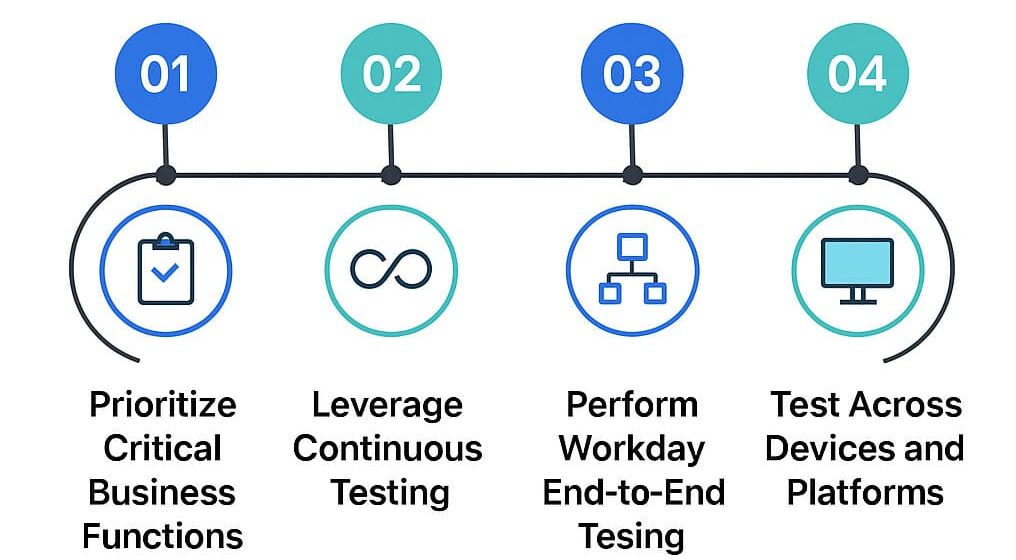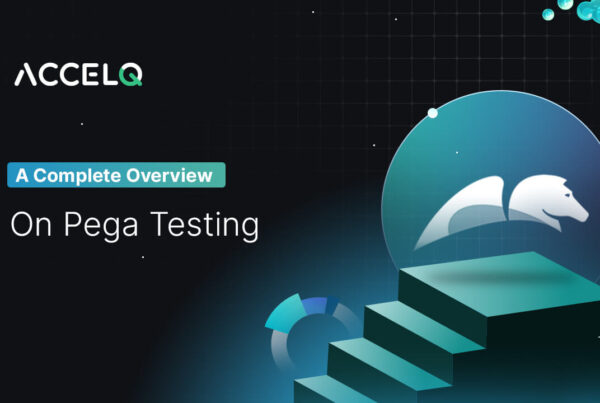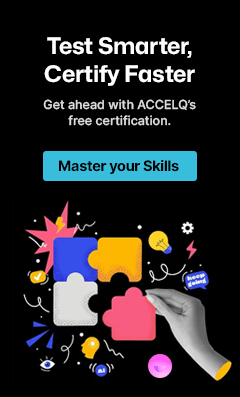Master Workday Testing: A Complete Guide to Best Practices and Automation

Workday is a global Human Capital Management (HCM) and Financial software system. Its extensive use has led to the necessity of Workday testing across organizations worldwide. In this detailed guide, we’re going to cover everything you need to know about testing in Workday, starting with the basics and nailing down some advanced automations – so that your Workday implementation is as airtight as possible.
What Is Workday Testing?
Workday Testing is an activity of ensuring that everything works fine under the Workday application, which organizes multiple records in a company. With HR, payroll and financials running on Workday, it is imperative that such a mission-critical activity works properly within the product. Because Workday can be so fantastically complicated, important customization and/or integration projects should involve a strategic alliance with testing to avoid interruptions in running the business.
Why Is Workday Testing Important?
Strategically, Workday end-to-end testing must be implemented effectively so that workforce processes can operate optimally and efficiently. From early hiring and even on to payroll and financial accounting, Workday manages several critical business operations. The system’s dependability directly affects the happiness of staff and productivity in business. Imagine the inefficiency of poor testing, mistakes made and lost productivity.
As such, Workday test automation makes it certain all vital business processes run smoothly and work in perfection, which is the silver lining for ROI on Workday implementations. Know more about optimizing Workday testing with ACCELQ to improve efficiency.
Automated Workday Testing: Streamlining Your Processes
With organizations in need of enhancing their agility and productivity, automated Workday testing is a key driver to expedite the testing lifecycle. By automating repetitive tasks and empowering teams to invest their time in higher-value testing activities, organisations can eliminate the manual burden on development.
Discover the power of functional test automation and why it’s a game-changer for Workday!
Benefits of Workday Test Automation
- Faster Testing: Automation is much faster than manual testing, making it possible to be continuously tested throughout the Workday lifecycle.
- Greater Precision: Automated tests eliminate human intervention so that results will be more accurate and consistent.
- Greater Coverage: Automated testing can cover more use cases than manual testing.
The Essential Workday Test Plan
It is critical to develop a strong Workday test plan and have your testing strategy cover most vital aspects of the platform. A well-designed test plan defines the strategy, scope, resources, deadlines and deliverables for testing Workday in order to deploy it successfully.
See how optimized test management can help you take your testing strategy to the next level.
Key Elements of a Workday Test Plan
- Scope and Objectives: Clearly state the scope of testing, which will include what modules to be tested, and what features to be tested.
- Test Scenario and Test Case: Create descriptive Workday test cases and scenarios for the functional area in Workday (payroll process, employees hired all file loads running etc.)
- Resource Allocation: Assign roles and responsibilities to testers, ensuring the right resources are available for each phase of testing.
- Schedule and Milestones: Set clear timelines for test execution, including milestones for different testing stages.
- Risk Mitigation: Identify potential risks and develop strategies to mitigate them during the testing process.
How to Perform Workday Testing: Step-by-Step Guide
Step 1: Understand the Workday Modules and Customizations
Before diving into testing, you should be familiar with Workday modules (like Recruiting, Payroll and Time Tracking) as well any customizations from your employer. Workday test automation is pretty customizable, so every implementation will be different and needs to be tested differently.
Step 2: Define Key Test Cases for Workday
Some of the Workday test cases would be those that cover multiple functionalities. Some examples of what are referred to as critical test cases:
- Core HR Functionality: Try out employee record management, payroll processing and benefits administration.
- Security and Access Control: Confirm that different users play appropriate roles, are afforded the correct permissions, and have access to sensitive HR information.
- Workday Reporting: System notifications and ensure accurate financial, HR or pay reports are being generated.
- System Integrations: Test integrations with Workday and other systems, such as ERP or third-party apps.
Step 3: Automate Key Tests
As we shared above, automated Workday testing accelerates the test life-cycle. Concentrate automation on repetitive tasks like data validation, regression tests and UI functionality.
Step 4: Perform Regression Testing
Since Workday has frequent updates and releases, it’s crucial to perform regression testing every time a new version or feature is deployed. This ensures that existing functionality remains unaffected by new changes.
Workday Testing Best Practices
Adopting Workday testing best practices can improve the efficiency and effectiveness of your testing efforts. Below are some tips to follow:

1. Prioritize Critical Business Functions
Focus on testing business-critical modules first. Workday often integrates with other enterprise systems (e.g., ERP, CRM), and ensuring these integrations function properly is essential.
2. Leverage Continuous Testing
Workday follows a continuous release cycle, which means updates are frequent. Implementing continuous testing allows you to test in parallel with the release cycle, reducing the risk of errors post-deployment.
3. Perform Workday End-to-End Testing
Ensure that all business processes, from recruiting to payroll, work smoothly by performing end-to-end testing. This testing should cover multiple workflows across different departments to ensure seamless integration.
4. Test Across Devices and Platforms
Workday can be accessed across various devices, including desktops, tablets, and mobile phones. Make sure to test Workday’s responsiveness across different platforms to ensure a consistent user experience.
Workday End-to-End Testing: A Complete Process
Workday’s end-to-end testing eliminates any manual processes employees are required to go through when interacting with employees and payroll, regardless of which module is used. This testing is evidence that all processes in the Workday application are tightly tied and data flows well between modules without any interference.
The process typically includes:
- Test Planning: Identify critical business scenarios such as hiring, onboarding, benefits, payroll, and leave management.
- Data Setup: Prepare test data to simulate real employee actions and payroll activities.
- Execution Across Modules: Run scenarios across HR, payroll, time tracking, and benefits modules to verify cross-module data flow.
- Integration Testing: Validate connections with third-party systems (financial apps, payroll vendors, compliance tools).
- Validation & Reporting: Compare actual results with expected outcomes, ensuring compliance, accuracy, and stability.
By following this structured process, Workday’s end-to-end testing eliminates manual intervention and ensures data flows seamlessly across all modules.
Conclusion
Your workday testing is vital to ensure your implementation of Workday works as expected and makes it easier for your business to function. Between automated Workday testing, an organized test plan and E2E testing best practices in mind, you can prove the effectiveness of your work to other leaders at your company by ensuring that their systems are both reliable and efficient.
To make maximum use of your testing efforts, it is essential to automate using tools like ACCELQ that help in making the process faster & do more quality coverage across different modules. That means you can count on your organization getting the most from its Workday investment, with both employee delight and business performance being optimized.
Curious About Automation? Book a Demo and Experience Workday Testing at Its Best!
Prashanth Punnam
Sr. Technical Content Writer
With over 8 years of experience transforming complex technical concepts into engaging and accessible content. Skilled in creating high-impact articles, user manuals, whitepapers, and case studies, he builds brand authority and captivates diverse audiences while ensuring technical accuracy and clarity.
You Might Also Like:
 Master Workday Testing: A Complete Guide to Best Practices and Automation
Master Workday Testing: A Complete Guide to Best Practices and Automation
Master Workday Testing: A Complete Guide to Best Practices and Automation
 A Complete Overview of Pega Testing
A Complete Overview of Pega Testing
A Complete Overview of Pega Testing
 SAP Testing: Best Practices, Types, and Automation Guide for 2025
SAP Testing: Best Practices, Types, and Automation Guide for 2025
































